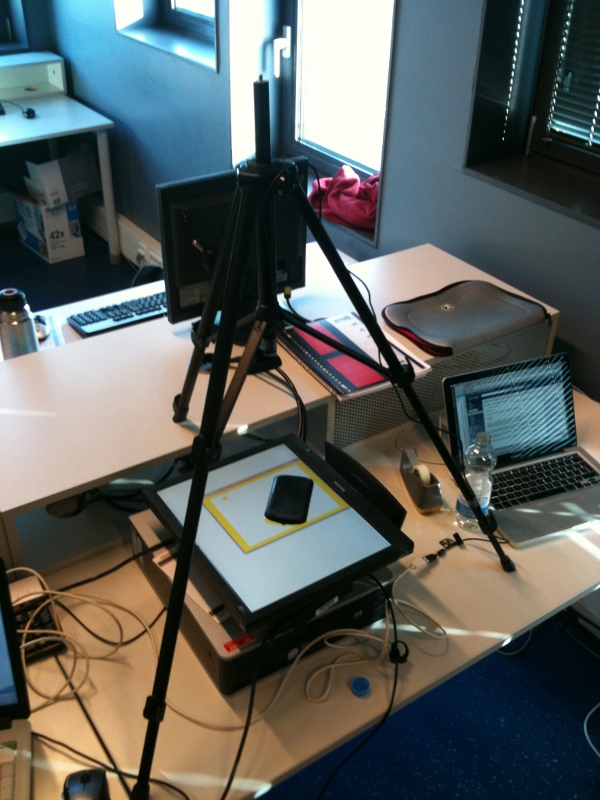Class Organization
Lab Sessions
Project Gallery
WOP (which stands for WOP) Projectby Sietse Ludger Geertsema and Sander Feringa WOP (we have forgotten where the name stands for) can be seen as a platform for recognizing objects that are laying on a monitor and give some form of feedback in relation to those objects on the monitor. A monitor laying flat on a surface, with its display pointing upwards of course, in combination with a webcam hanging above the screen on some sort of tripod can achieve this setup. A simple application: let the software recognize some objects placed on the screen, combined with some given information about the objects. When a user lays a known object on the monitor at a later time, the software can display the information relating to that specific object on the screen beside the object. However, the use of a physics-engine in combination with our software was advised, so we thought of another type of program to show some innovative interaction with our setup. We came up with a ballgame with a virtual ball in a playing field (the nicest would be the exact size of the monitor) and some objects laying on the monitor, those will be recognized as obstacles on which the ball would bounce off. The webcam films the monitor with all the objects laying on it. The captured frame then goes through an edge detection algorithm that generates a picture of all the objects in only one color (and that color must be a light one, in our case yellow, or else the Droste-effect will kick in) that then can be read by a special routine in the physics engine that can generate a field of polygons with collision-edges. In practice we could of course not make the best setup for this game (that could for instance be Microsoft’s Surface 2 table), so our end result is bit simpler (see the video in the link below). Because of not ideal code efficiency and a not fast enough laptop the update speed of object-to-collision-edge-action is about 1,5 seconds. We would, of course, have liked it to be running at 30 or even 60 fps. And if that could be achieved, even moving the virtual ball with a real life object would be possible. Much can be done with this type of innovative interaction.
|
| Recent Changes (All) | Edit SideBar | Page last modified on February 06, 2011, at 09:02 AM | Edit Page | Page History |
| Powered by PmWiki | ||
